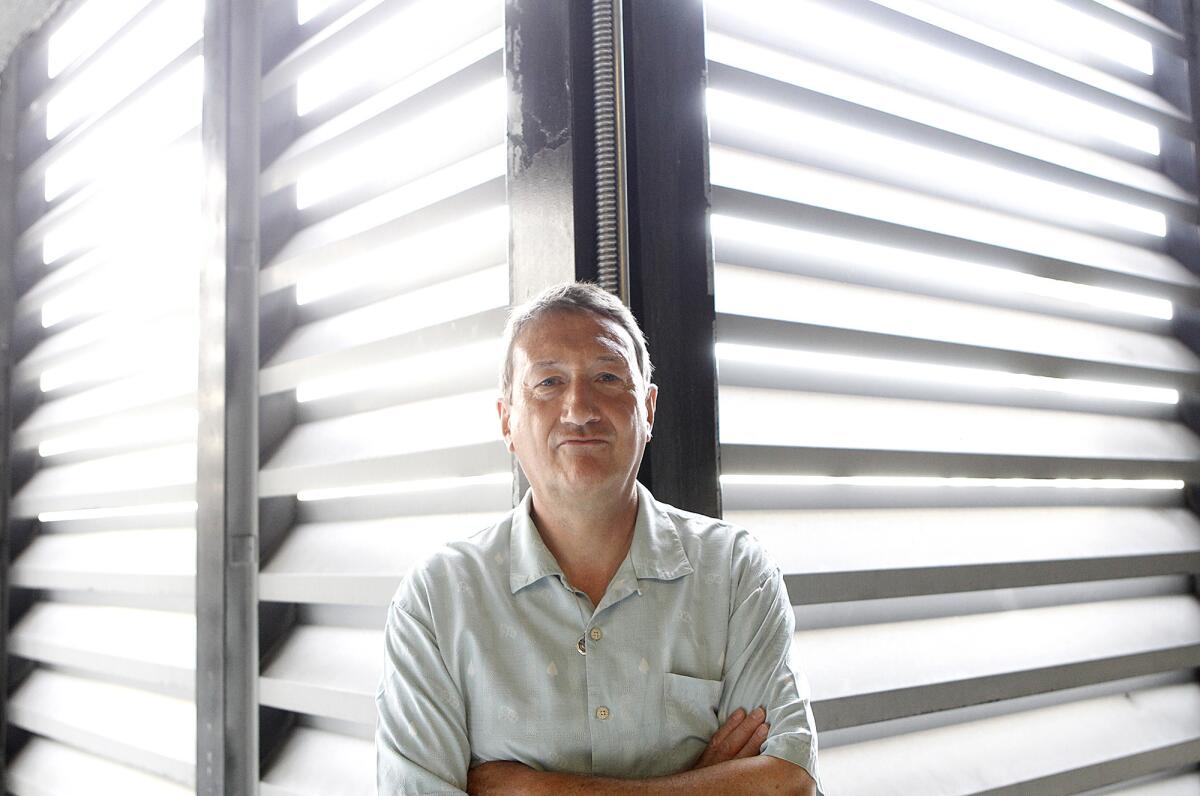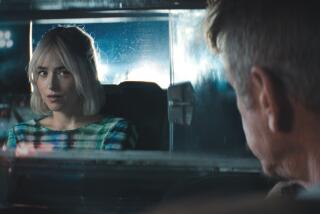Less is so much more in suspense drama ‘Locke’

It should be incredibly dull, just a man in his car on the phone. Yet the new British film “Locke” is gripping in its simplicity, wringing deep, suspenseful drama from a man making difficult decisions from which there will be no turning back. As he drives in his car while on the phone.
Ivan Locke — played by Tom Hardy, the only character seen onscreen — is a construction site foreman who is preparing for the largest job of his career, as the next morning he is to oversee the pouring of a massive concrete foundation for a skyscraper. Yet he is juggling calls as he drives through the night to be by the side of a woman with whom he had a one-night stand as she is giving premature birth to their baby. His marriage, his family, his career and his future are in jeopardy as he struggles to do what he believes to be right.
The film was written and directed by Steven Knight, who wrote David Cronenberg’s “Eastern Promises” and was nominated for an Academy Award for his screenplay to Stephen Frears’ “Dirty Pretty Things.” (He also co-created the original “Who Wants to Be a Millionaire.”) The directness of the story in “Locke,” its sure-footed unfolding of revelations one after the other in only 85 minutes, give it a momentum and tension that defy its minimal design.
BEST MOVIES OF 2013: Turan | Sharkey | Olsen
“It’s not an easy one to explain to a friend,” acknowledged Hardy in a recent phone call from London. In the film he adopts a calm, gentle-but-firm Welsh accent — “It’s my attempt at a Welsh accent,” he said with a laugh — and in conversation his voice is higher and reedier than one might expect from his bruising roles in films such as “Bronson,” “Inception” and “Lawless” or as the supervillain Bane in “The Dark Knight Rises.”
The inspiration for “Locke” came in part while Knight was shooting camera tests for his Jason Statham thriller “Hummingbird” (released in the U.S. as “Redemption”), and he found himself taken by the look of nighttime digital photography and the way it turned a car into something like a traveling theater. From there he set out to imagine the everyday drama that might take place in such a setting.
“I tried to make him the most ordinary man in the world,” said Knight during a recent interview in Los Angeles.
“I passionately didn’t want it to be about anything that would make the papers or the local news. It’s not a kidnapping or a hostage situation, it’s not a murder,” he added. “I think often filmmakers feel they only have permission to make a film if there’s a bang in it, a thing that makes it unreal or unusual. I think people really like the idea we turn the camera on an ordinary tragedy, which can happen to anybody.”
PHOTOS: Box office top 10 of 2013
The director also decided to film his unusual story in an unusual way. A BMW SUV would be towed on a trailer around three circuits of roadways near London, with cinematographer Haris Zambarloukos training three cameras on Hardy, who had his lines scrolling on a teleprompter. (Some shots of Hardy actually driving would be picked up as well.) On the other end of the line was an impressive list of voice talent, including Ruth Wilson, Olivia Colman, Andrew Scott and Alice Lowe, all in a nearby hotel making calls on cue.
The film was shot over only eight nights, as the production would perform the script straight through two times a night. In the end, Knight and editor Justine Wright had 16 versions of the story to work from.
“Before we started we expected there to be a lot of technical trouble, and there wasn’t. Lots of things went right,” Knight said. “People were saying for the continuity to be right you needed to do the same call on the same stretch of motorway. But it doesn’t matter. Nobody cares. It’s one long continuity error. The whole thing.”
The film was shot in February 2013 in a short window between Hardy’s work shooting the title role of the upcoming “Mad Max: Fury Road” in Namibia and the New York crime thriller “The Drop” (which became James Gandolfini’s last film).
PHOTOS: Behind the scenes of movies and TV
Hardy arrived suffering from a cold, and so Locke periodically swigs cough syrup. The actor likened the film’s unusual process to “a mix of theater, radio and film, all together,” adding, “Steven wanted to do something that hadn’t been done before. The contained environment of the car made total sense with the material we had. So it was the best way to do it, to be honest, as opposed to shooting it on successive days in small pieces.”
For an actor who often transforms himself physically for roles, seeming to change his entire physical structure through some strange alchemy, the challenge was that he would be stationary, reduced to his face and voice.
“Bane and Bronson and other characters I’ve played, each has a specific theme or tone and a style of acting you’re trying to deliver for the piece that you’re in,” Hardy said. “The particular project requires a different type of approach.
“But there was transformation there as well,” he added of the beard, soft sweater and overall manner of Ivan Locke. “There are different types of transformation, more subtle, than putting on a lot of weight and punching people in the face.”
According to a recent profile of the actor in Esquire, which asked whether Hardy is the greatest actor of his generation, after Steven Spielberg saw “Locke” at the Sundance Film Festival he called the actor with congratulations. When “Locke” had its world premiere last fall at the Venice International Film Festival, it caught audiences and critics as a surprise, its catalog description perhaps unable to capture the film’s specific impact.
“So often you see everything that needs to be seen to experience the story,” Knight said. “One of the best things people say to me afterward is they forget they haven’t seen the other characters. They do it themselves, they’ve made their own special effects.”
More to Read
Only good movies
Get the Indie Focus newsletter, Mark Olsen's weekly guide to the world of cinema.
You may occasionally receive promotional content from the Los Angeles Times.











